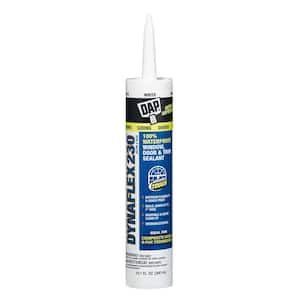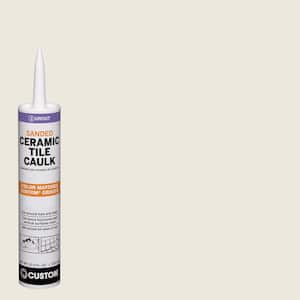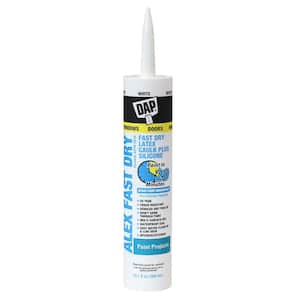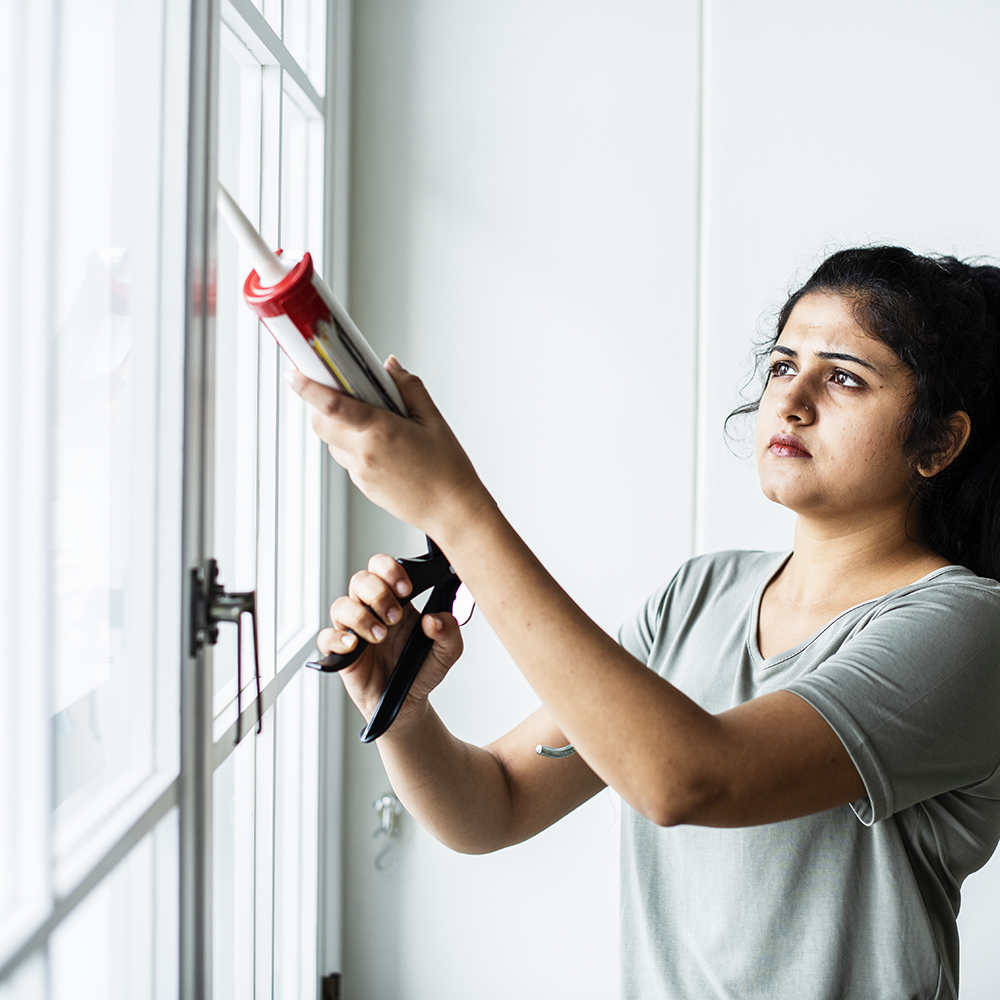
Difficulty
Beginner
Duration
Under 2 hours
Caulk guns are devices that help people use caulk, a type of sealant, effectively. Caulk is a substance used to seal and adhere, such as closing a gap or crack between a window frame and jamb, or a sink and a vanity. Most any space can be sealed using caulk and a caulk gun. Caulk can be used on its own, but a caulk gun helps significantly. In this guide we'll show you how to use a caulk gun.
How Does a Caulk Gun Work?
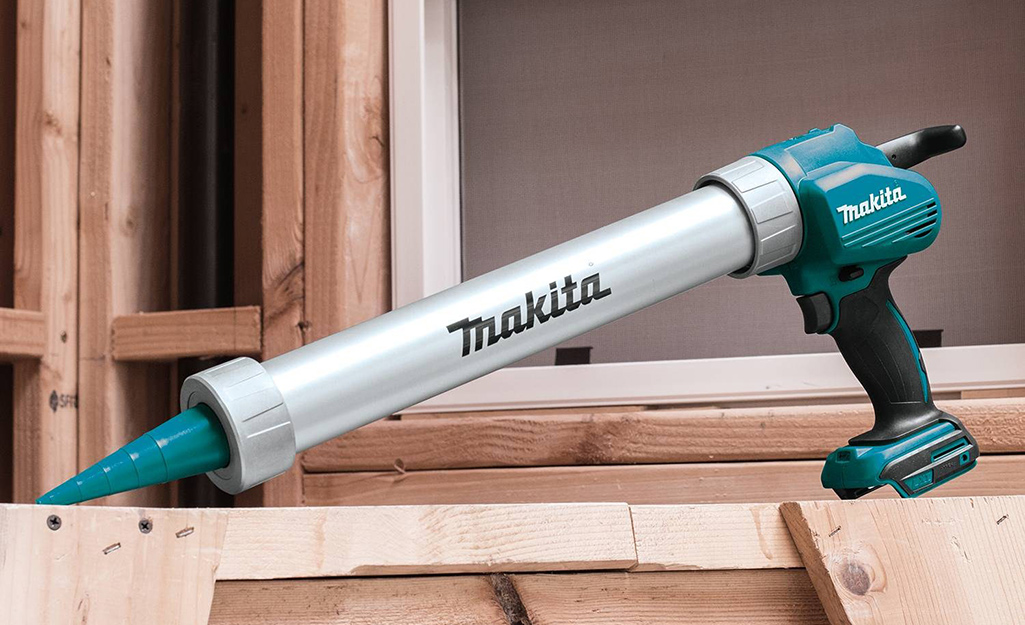
A caulk gun is an item that takes the hard work out of caulking. Because of the way the sealant gun is built, you simply place the caulk into the gun and, using the hand trigger to apply pressure, the device delivers a stream of sealant to the designated area.
There are two types of caulk gun rods, the ratchet rod and the smooth rod.
- Ratchet rods will let out a continuous stream of sealant once pressure is applied to the hand trigger, not stopping till the rod is pulled back. This is helpful for light projects, or those that require a long stream for an extended period of time.
- Smooth rods are the more common rod type where, if you release the hand trigger, the caulk will stop streaming out of the gun. Apply pressure and the sealant is easily released.
Before You Caulk
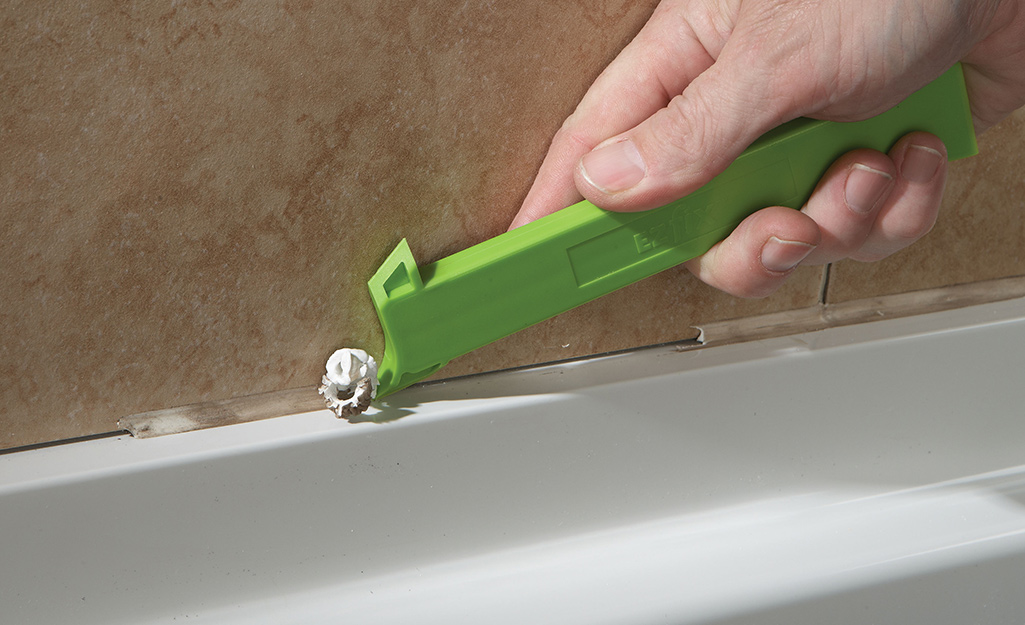
- Before you caulk the crack, make sure to clean and mask the area.
- If the area you are looking to caulk has old residual caulk, make sure to scrape the old caulk off with a putty knife.
- If you need extra help scraping off the old sealants, look into using a caulk softener.
- Once the old caulk is gone, rinse the area using a rag, hot water, disinfectant and rubbing alcohol. Doing this will remove all dirt.
- Make sure you're using the appropriate caulk for the right situation. For example, if you're caulking tile, get specialty tile caulk for the job.
- Optional: If you need to narrow your caulk stream, place painter's tape around the area to apply caulk more precisely.
Load the Caulk Gun
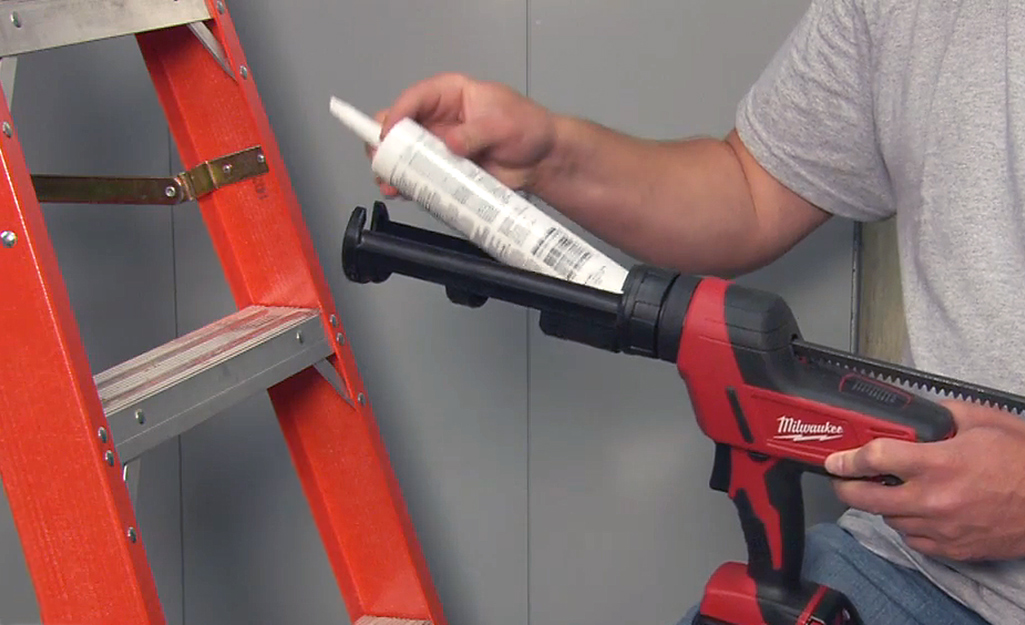
- At the end of the caulk gun there is a plunger that needs releasing. Press it to release. Then, pull the plunger back to make space to load in the caulk. Next, we'll tell you how to load a caulk gun.
- Load the caulk into the sealant gun with the nozzle facing outward and the flat side facing you and resting near the caulk gun's trigger end.
- Once the caulk has been inserted into the sealant gun, make sure it's secure and snug.
Cut the Tip of the Caulk
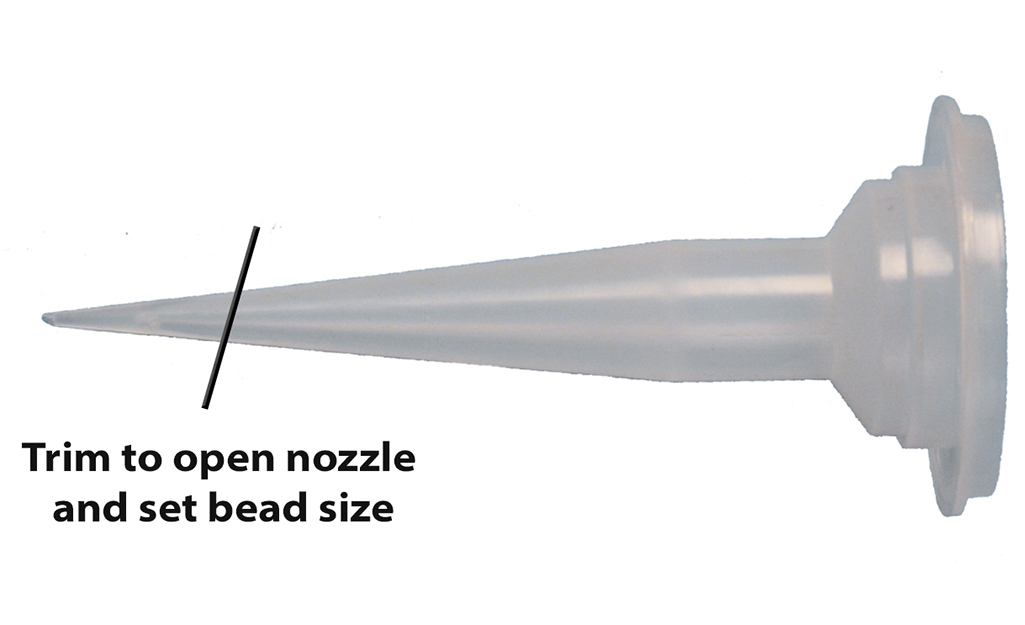
- As soon as you've confirmed the caulk is secure and level, make sure the gun's metal end hook latches to the back of the caulk to more firmly keep it in place. Refer to the manufactuer's instructions if you need further help.
- Now, tilt your caulk gun at a 45 degree angle and cut the tip with scissors. It's recommended you cut more of the tip off if the area you're sealing is bigger or wider. Cut less of the tip for a smaller stream of caulk to use on a smaller crack. Reminder: This is permanent, so definitely take the amount cut into account.
Tip: If after you've cut the tip, the caulk won't come out, use a nail to puncture the seal. It's possible that the seal of the caulk and sealants has remained, and it needs opening.
Apply the Caulk
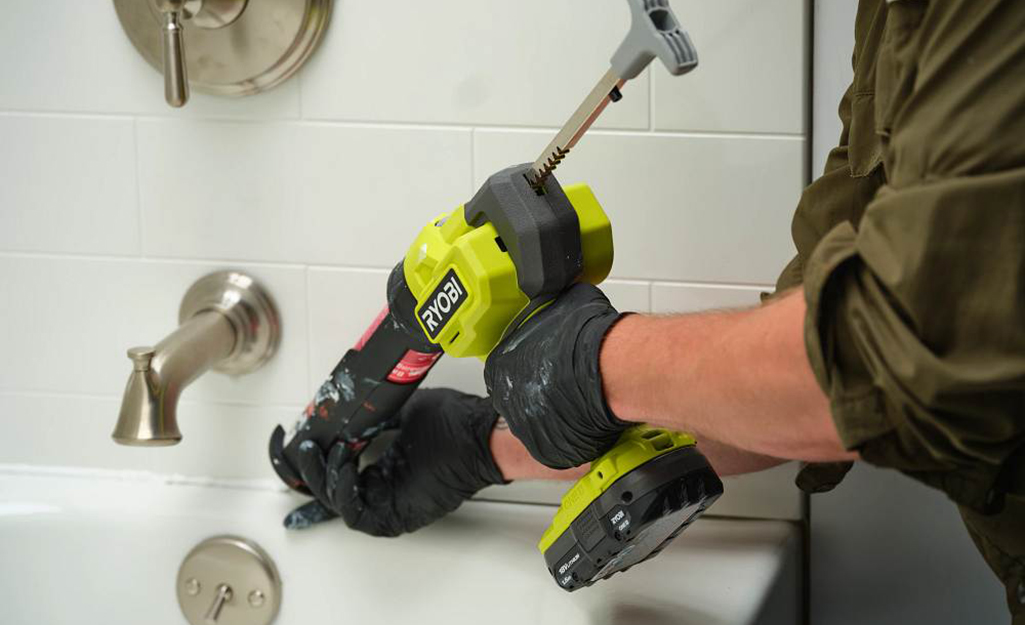
- Learning how to use a caulk gun is pretty straightforward. Before you seal the area you need, do a practice run. Squeeze out some of the caulk using the trigger onto a piece of paper. Practice as many times as you need to make sure the application is what you want.
- It's recommended that in order to apply caulk efficiently, you hold the caulk gun at a 45 degree angle. Then, apply pressure to the trigger. While keeping your hands steady, move over the area that needs sealing.
- Caulking requires a balance between slow and fast, so that the sealant isn't too thin or too thick.
- As you move over the crack with the sealant, keep both hands on the caulk gun at all times. With one, add pressure to the trigger. Use the other hand to hold the gun steady.
Smooth Over the Caulk
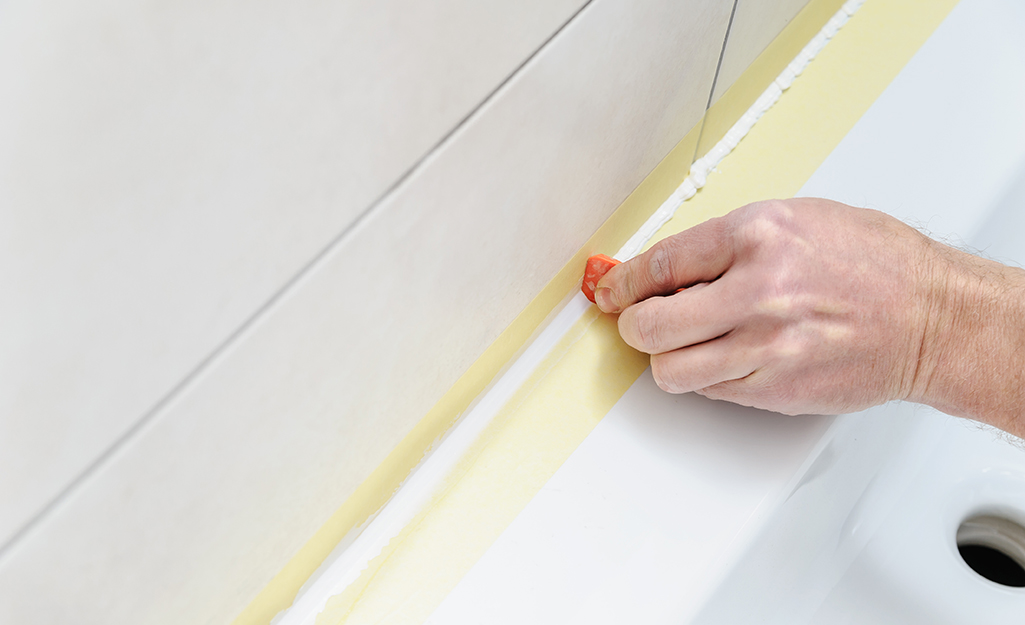
- Once the caulk has been applied, even it out with a spoon or your finger. Run the spoon or finger over the caulk to smooth it out along the crack. Smoothing the caulk makes it less obvious and more aesthetically pleasing.
- If at any point you run out of caulk while sealing, simply follow the previous steps to add a new tube to the caulk gun.
Caulking is often the finishing touch on a DIY project in the kitchen or bathroom, a flooring job or a fresh paint job. This guide shows you how to use a caulk gun so you can give your work a professional-looking finish. Ready to start caulking? The Home Depot delivers online orders when and where you need them.
